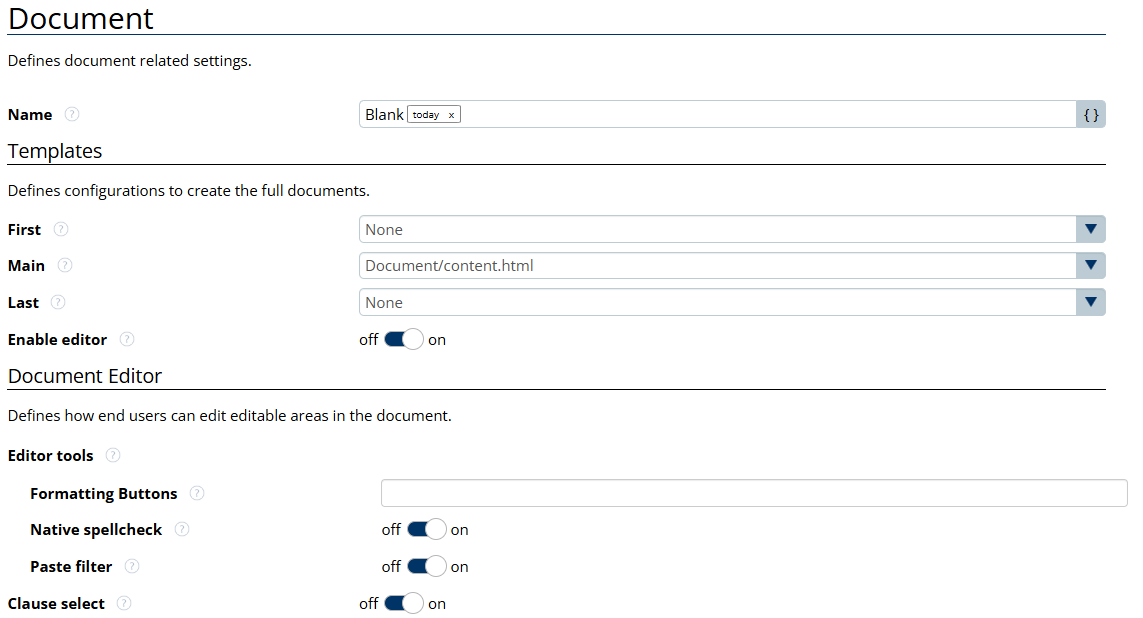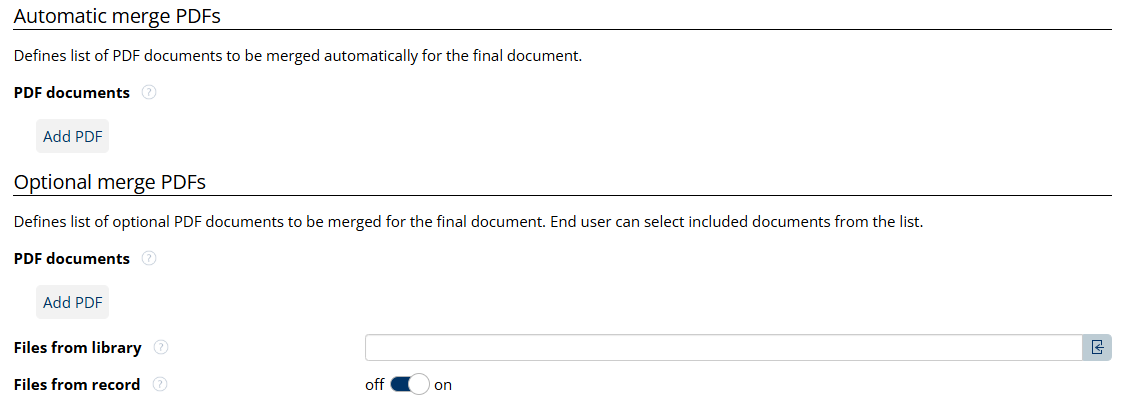Document
Defines document-related settings. The Document tab is visible only if 'Generate document' is enabled in the Workflow settings.

Name
Allows to customize the document name for generated documents using text or selected mapping fields. A typical naming convention for quotes, for example, is “Offer for ${Account.Name}” where the Salesforce field Name from Account can be selected from the list with the ${} icon.
Templates
Defines the document content templates used to create the full document. Admins can select from the select block to choose which is the Main Content. All document parts created new are added here automatically to select.
Most documents only require one section. However, it can be useful to divide a document into sections so that those sections can be rearranged within a document. For example, a document could have 3 sections: the First section is a cover page, the Main section is the body of the document, and the Last section is an appendix for example.
‘None’ means that the particular content template is not added to the final document.
First: Template for first section. First section is not part of Table of Content or main section total number of pages.
Main: Template for main section.
Last: Template for last section. Last section is not part of Table of Content or main section total number of pages.
At least one section should be included in the final document.
Document Editor
Defines how end users can edit editable areas in the document with Dynamo Clauses or other basic editing tools.
The Clause filters define which clauses are enabled for users to select via the editing screen. This is useful for example if the organization has a big clause library and for a specific template, the user should only see the clauses that are relevant to that template.
For more info on Clause usage, please check Dynamo Clauses.
Watermarks
Adds a watermark to the body of the main template of the document. The input should be a string, either entered manually or via a variable.

Merge PDFs
Allow merging other documents with the generated file. Merge PDFs are usually stored in Salesforce under a shared library (with users) or under the record. If the SharePoint feature is enabled in your org, Merge PDFs can also be stored on SharePoint under Office file type (which will later be converted to PDF).
Automatic Merge PDFs: defines PDF attachments merged with the final document. The selected document will be merged with the generated document and appear under it.
Optional Merge PDFs: defines a list of optional PDF attachments merged with the document. The end user can select the attachment from the list during the editing phase.

Document View
Defines how the document is displayed on screen during editing or previewing:
Print emulation: replicates the same view as when printing (header, footer and margins).
Show navigation: enables a list of all headings and parts (attachments included) for easier navigation if the document is long.
PDF Document
Defines how the PDF document is handled. The recommendation is to enable the following:
File versions so that the final PDF document can always be saved as a new version. This helps minimize Salesforce storage.
When File versions is on, either Autosave or Manually save (Show save button)
Autosave on exit: automatically save when users exit the document
Autosave when viewed: automatically save whenever users preview the document. This is useful when User Editing is enabled. Moving between Edit <> Preview screen helps save the inputs made by the users
Show save button: Save button displays in Preview screen. Document saving only happens when users click on Save button
